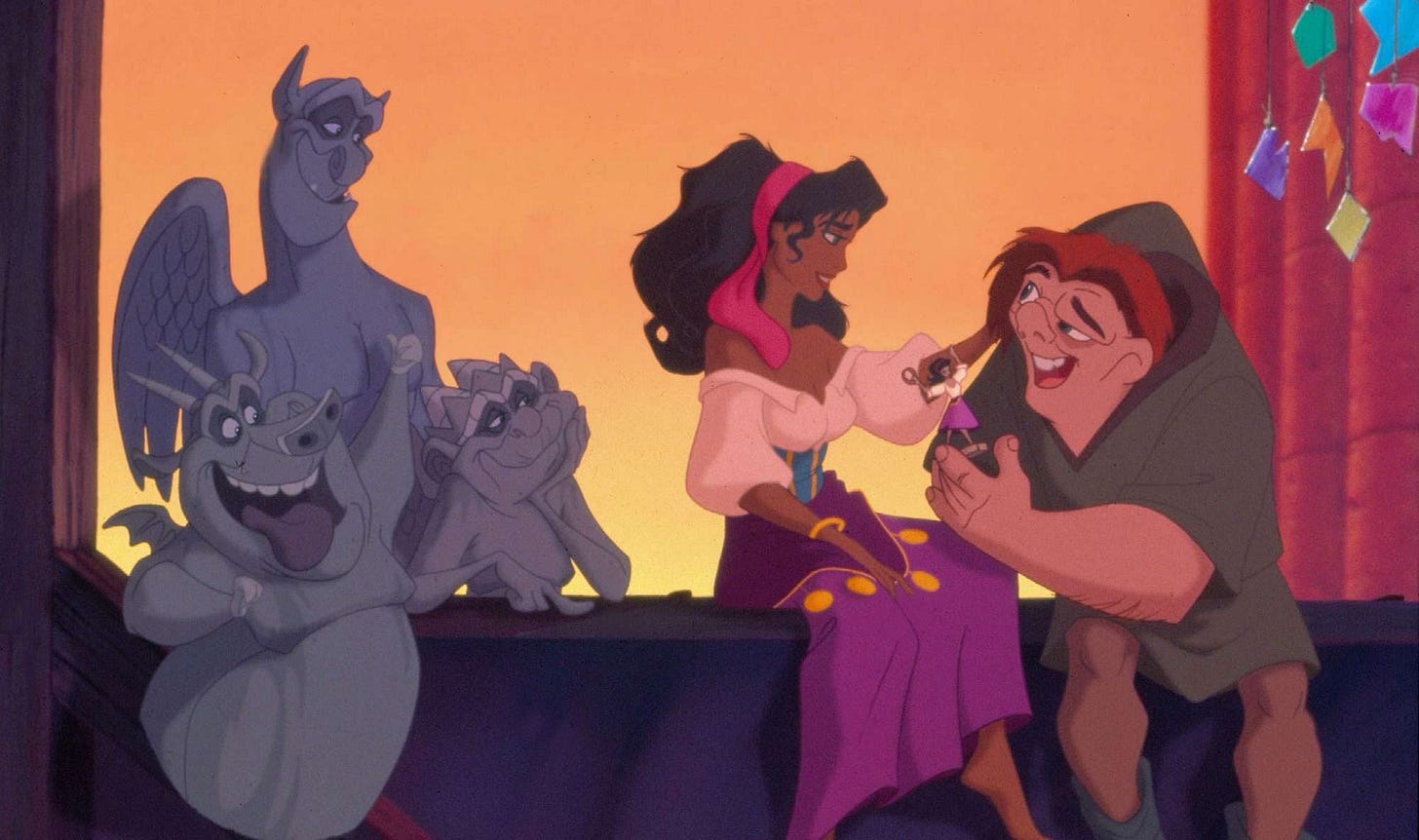Chapter 7: It's all about functionality
Leave it to a super smart Oxford student to teach me the difference between a gargoyle and grotesque.
I’ve always been passionate about architecture and love learning new facts related to a building's design - roof types, brick patterns, decor details etc. As I explored the Harry Potter-esque campus of Oxford University on a student led tour, we stopped at the University Church of St. Mary the Virgin. After an explanation of its history, our guide pointed to the gargoyles and asked if we knew the difference between a gargoyle and grotesque.
My assumption was that gargoyles were specific to churches and grotesques were for secular structures like government buildings. This was influenced by a few factors. My notion of gargoyles was derived from the Disney movie The Hunchback of Notre Dame, where Quasimodo’s friends were gargoyles named Victor, Hugo and Laverne.
My thinking behind grotesques was largely due to my knowledge of Toronto’s Old City Hall - which I’m going to take the moment to share. Toronto’s Old City Hall was designed by famed architect E.J. Lennox. The municipal building took longer than anticipated to build, over a decade, and was significantly over budget. Upset, the city councillors refused to have anything acknowledging Lennox as the architect on the building. In retaliation he had the stonemasons sign his name in the corbels under the upper eaves and had them carve hideous grotesques of all the councillors who had shunned his recognition at the entrance. The joke was that one grotesque was attractive and was meant to represent Lennox.
So between hunchbacks and vengeful architects, that is how I imagined the difference. Not wanting to speak up, in case I was wrong in front of a highly intelligent Oxford student, I let the others guess.
“The difference is that a gargoyle is a waterspout. Its mouth makes a gurgling noise when water passes through. A grotesque is just decorative,” he shared. At this moment my mind was blown and I understood why I could never get into Oxford.
After all these years, I had thought the stone carvings were only permitted on specific buildings, but it turns out any church or secular building can have a gargoyle or grotesque and that it was related to functionality. That is why gargoyles are commonly found near rooflines, they collect rainwater and expel it, protecting buildings from water damage.
According to Google Arts and Culture, gargoyle comes from the French word gargouille meaning throat, while grotesques “were originally buried Roman ornamental decorations discovered during the Renaissance in subterranean ruins known as grotte.” While they may differ, they do have commonalities as both can have crafted expressions of fear, joy, drama or comedy. They can even be designed to look like fantastical, mythical creatures.
After that moment I started noticing gargoyles on other buildings not related to God. It’s a fun fact I now share with others and on my Hinge profile. I hope you’ll do the same.
Previous post - Chapter 6: Mysterious drips from above







Fascinating - I didn't know that! Thanks for sharing.